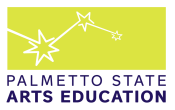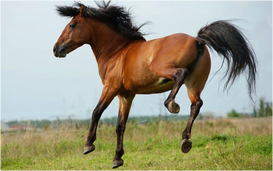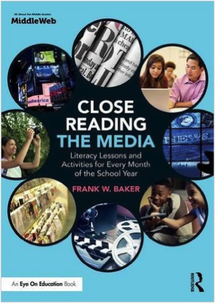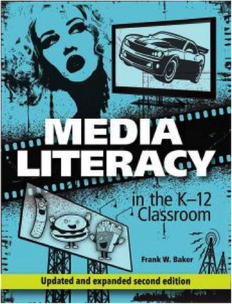|
by Frank W. Baker If you read any news story during the past year about “fake news” you no doubt also came across the phrase “media literacy.” Many of those stories recommended that “media literacy” be taught in our schools. And that’s a good thing. But what exactly is media literacy? Since I’ve been teaching it for the past 20 years, I can tell you, from my perspective, that media literacy is applying critical thinking to media messages. Media literacy is about engaging students in both analyzing AND creating media messages. One of the major ideas in media literacy is that all media represent something or someone. So looking at the photo below, I’d ask you: what is this? If you answered: “it’s a horse” you’d be wrong. It’s not a horse. But rather it’s a photo of a horse: it represents the horse. We can’t touch the horse, or feed it, because it’s not real. I am willing to bet that many of you reading this have had no training in media literacy and so you would not have known about media as representations. Most students, who see a production on the screen, aren’t thinking about how it got to the screen—the process. But knowing how media are made is really important. Take movies as an example. The people who make movies are all crafts technicians who specialize in one area or another. Everyone from the camera operator to the costume designer to the storyboard artist has been trained to utilize certain techniques that communicate to us, the audience. It is these techniques that media literacy hopes to teach. Media literacy also encourages critical inquiry—questioning. Who made this; why did they make it; what techniques did they use; who is the audience; who benefits; and who or what might be omitted? These are just a few of the questions students could and should consider when they study media. Most teachers teach with the media, but not many have been trained in teaching ABOUT the media. So how do we get started teaching “media literacy” if we haven’t been trained? For years, the workshops I have conducted all start with visual literacy---learning to read images. I can take a photo from the morning’s news, cut off the caption, and engage students in a “close read” analysis. I can take a magazine from the media center and have students deconstruct how the images on the cover communicate and persuade. I can take a commercial or film clip from YouTube and challenge students to understand how to analyze lighting, sound, camerawork, music and more. The 2010 revision of the SC Visual & Performing Arts standards included “media literacy” for the first time. The 2017 revision now includes “Media Arts” which embeds media literacy within that standard. If you teach with images or video (and I assume most educators do), then you should be interested in media literacy and how teaching it can enhance learning. Want to know more? Here are two books I authored recently which I hope you might ask your school library media specialist to acquire: In the meantime, if you have a question about media literacy education, and how to implement it, send me an email. Guest blog post submitted by: Frank W. Baker PSAE Board Member fbaker1346@gmail.com Comments are closed.
|
About PSAEPalmetto State Arts Education is a network of professionals dedicated to advancing learning in and through the arts for all students in South Carolina. Categories
All
|




 RSS Feed
RSS Feed